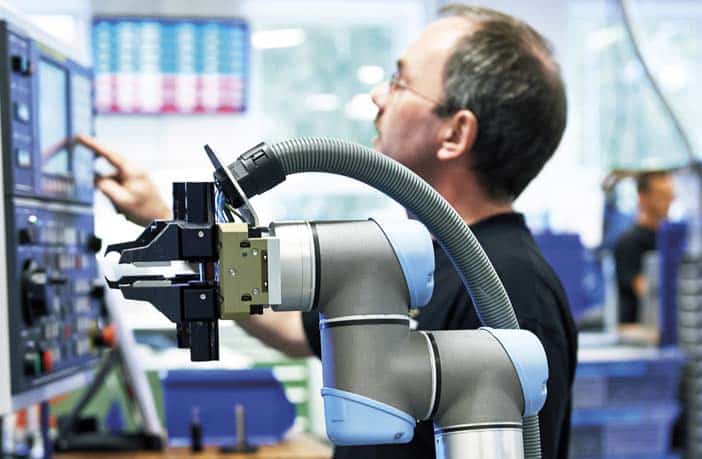Change management: driving success for cobots and robots in warehouses
Implementing robots (or cobots) in warehouses usually has a limited impact on workforce. It requires methodology and strong communication towards the staff.
On January 22, 2019

Implementing robots (or cobots) in warehouses usually has a limited impact on workforce. It requires methodology and strong communication towards the staff.
On January 22, 2019
A recent FM Logistic’s case-study shows that although technology plays a key role in warehouse innovation, its success is linked to a well-implemented change management program that involves clear communication and strategic methodology.
Robots and cobots have a lot to offer logistics 4.0. They help to reduce time and effort by palletizing, picking and packing goods – and even interacting with humans physically. 45% of the world’s top 200 commerce companies now use robotics to manage delivery and order fulfillment. Even with robots on the rise, case study findings demonstrate that trained technicians are necessary because robots still have limits. Implementation is also a complex process that can’t succeed without the human dimension.
Get advice from experienced industry professionals in the latest case-study on how change management supports successful robotics implementation and transforms warehouse logistics!
So how can (wo)man and machine work together efficiently? Logistics experts design a change management strategy to prepare every step of the process, convincing staff to adopt robotics technology.
“Improving ergonomics is a key first step for increasing productivity and quality of work”, says Head of Operations at Isybot Philippe Van de Sompèle. He highly recommends to set up a diagnosis of operator working conditions. Discover more on creating a successful change management plan, with tips on how to approach analysis, determine specifications, create engagement and train staff.
The case study highlights that robots usually have a limited impact on jobs because today’s staff perform multifaceted tasks, sometimes requiring 3 robots to do 1 human job.
What new role will operators have, and where do robots fit in? “The transfer of responsibility requires precise rules of collaboration. If things are not well organized, the robot will disturb the man and vice versa”, Patrick Bellart, FM Logistic’s Innovation and Automation Corporate Director. Learn how change management guides staff in the development of their skills, and how to create good operating conditions for robots, which are less flexible than humans.
Now, it’s time to explore the advantages of the robot evolution, with an expected rise of shipments to from 40,000 in 2016 to 620,000 in 2021.
Get advice from experienced industry professionals in the latest case-study on how change management supports successful robotics implementation and transforms warehouse logistics!
Thank you to Isybot, MIP Robotics and Cap Digital for sharing their experience and expertise on robotics in this case study.
How can we help you ?
Fill in the form